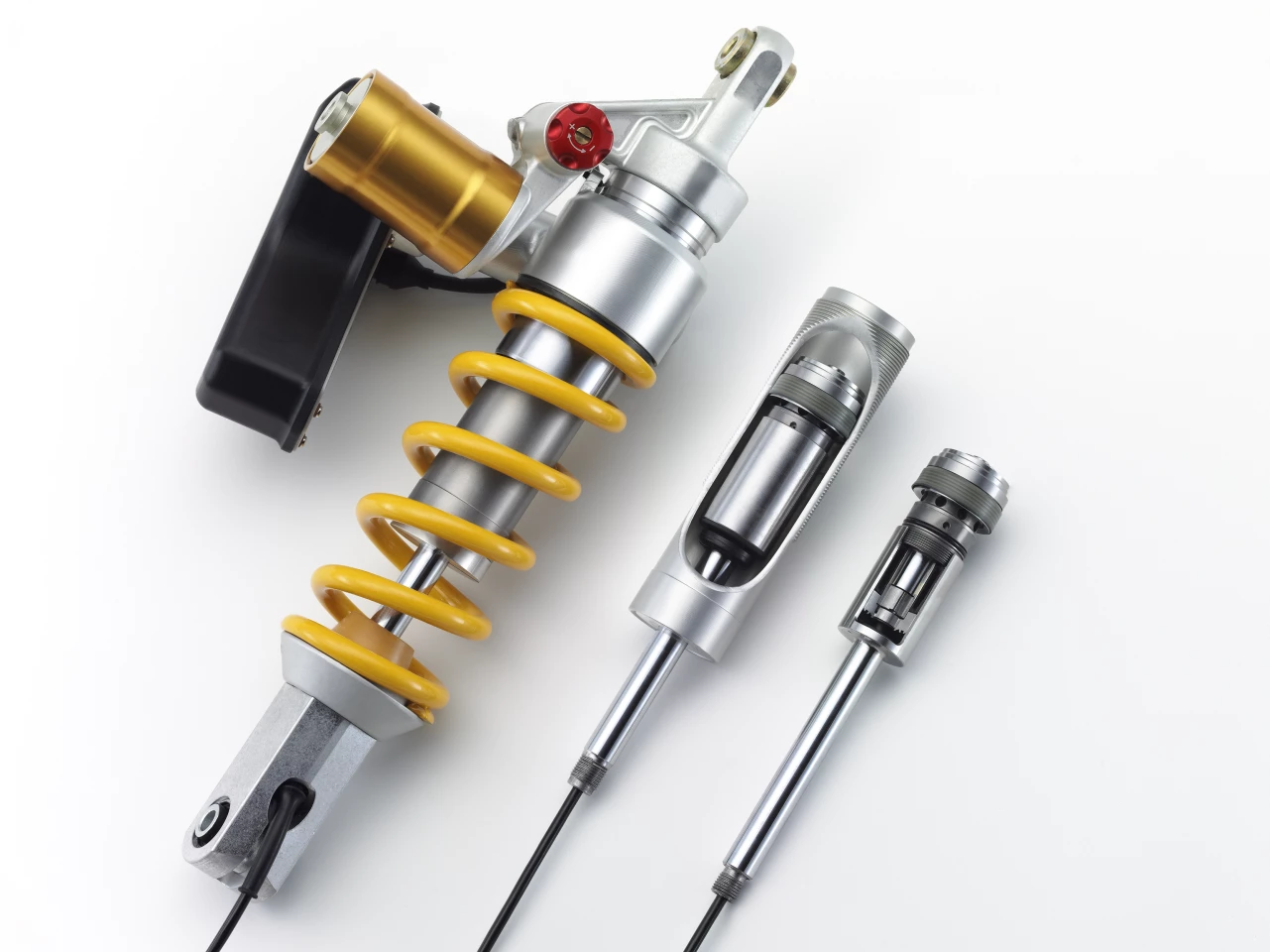The trouble with setting up the suspension on a motorcycle is that you're constantly compromising. If you want a nice firm ride that's suitable for hard cornering on fast, smooth roads, you're sacrificing comfort on the highway and optimal roadholding on a bumpy surface. Electronic suspension adjustment goes some way towards addressing these concerns - at least you can change your suspension settings without having to get down under the bike with a c-spanner and a screwdriver. Now, BMW is looking to eliminate this fundamental compromise using automated, active suspension adjustment - a system that works out exactly how you're riding the bike at a given moment, what the road surface is like, and automatically adjusts the suspension to make sure you've got the perfect ride at all times. The BMW Dynamic Damping Control (DDC) system is said to be hitting the market "in the near future."
Active suspension is hardly big news in the automotive world - it's been used on all sorts of cars, right down to the Ford Mondeo - but as usual, adapting the technology to the motorcycle world has taken a lot longer. That's partially because the dynamics of motorcycle suspension are a lot more complicated - car shocks don't have to deal with bumps on a 50-degree angle, for example, or take into account a contact patch that moves slightly off the central axis as the vehicle turns. But I suspect it's also because the consequences of getting it wrong can be far more severe on two wheels.
Still, the average motorcyclist is probably far more likely to go and push the limits out in the hills than the average car driver. We tend to ask more from our suspension than car drivers, and we tend to be much more aware of our vehicles' abilities and deficiencies - so you'd have to say there will be a big market for active suspension systems once they make it onto showroom floors.
The BMW DDC system isn't as fancy or immediate as the magneto-rheological damping fluid in Audi's active suspension system - which makes virtually instantaneous changes to the effective viscosity of the shock fluid to effect damping rate changes on the fly. Instead, BMW uses a simple variable ring aperture to make its compression and rebound damping adjustments.

The DDC system takes data from a number of other systems and sensors into account to decide when to make suspension adjustments, including:
- The bike's ECU
- ABS sensors at each wheel
- Spring travel sensors at the forks and shock
- Tilt and roll sensors
Here's a few examples of the kinds of on-the-fly suspension adjustments the bike can then make:
When the rider gets hard on the gas, the bike automatically activates stronger damping at the rear shock to prevent squat and wheelie effects and help get the power down more effectively. Likewise, as the rider brakes, the front forks receive increased damping to help combat nose-dive and keep the bike stable and ready for corner entry. Damping in these situation is added in proportion to the acceleration and deceleration forces the bike is experiencing, and the added damping is removed as soon as the acceleration or braking conditions disappear.
As a bike leans over, the suspension is gradually firmed up relative to the bike's lean angle, and this effect loosens off as you approach vertical again. This one seems a little counter-intuitive given that under heavy lean angles, the wheels need to move further than usual to compensate for bumps - but where smooth roads are concerned, this will certainly be a helpful feature.
The bike will also recognize bumpy terrain, be it potholes, ruts, rail crossings and the like. When the front wheel suspension travel sensors detect a bumpy section of road, both front and rear suspension will immediately loosen off to provide the smoothest ride possible over the obstruction. It's unclear how quick this process will be, or whether the rear shock will be able to compensate for incoming data quickly enough such that a bump that hits the front wheel can be adjusted for by the time you ride over it with the rear.

The system seems to be at a fairly crude level at this point, but with the sensors and quick-adjust dampers in place, refining it is more or less a software issue. BMW claims the DDC system will premiere on BMW Motorrad motorcycles "in the near future" - putting BMW another broad technological step in front of the competition.
With traction control, ABS, quickshifters, tiptronic semi-automatic transmissions, tire pressure sensors, electronic and now active suspension hitting the motorcycle market, it's safe to say that the days of simple "two wheels and an engine" motorcycling are numbered. Traditionalists can take some solace in the fact that no significant upgrades have been made to the nut that joins the seat and the handlebars.












